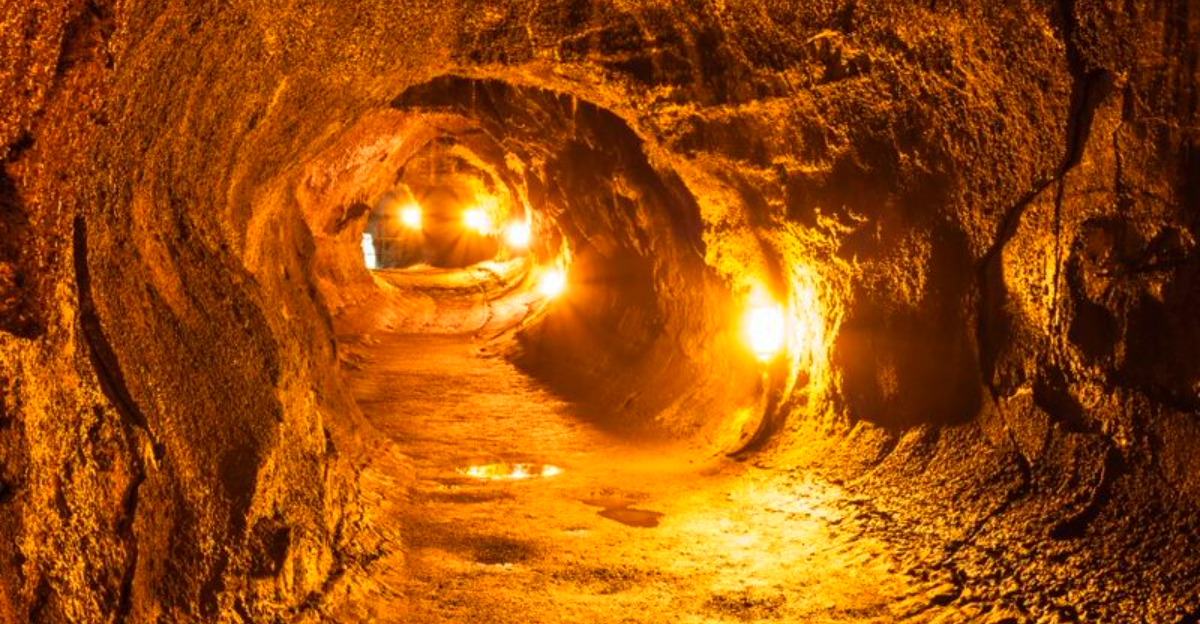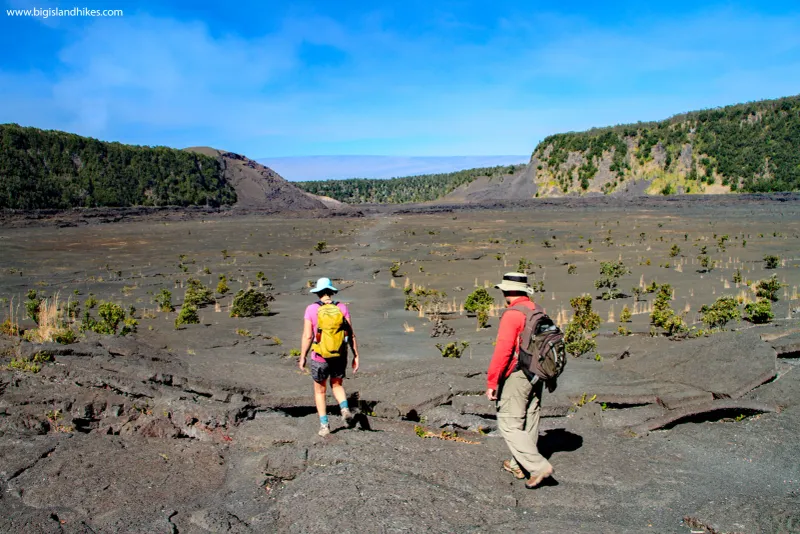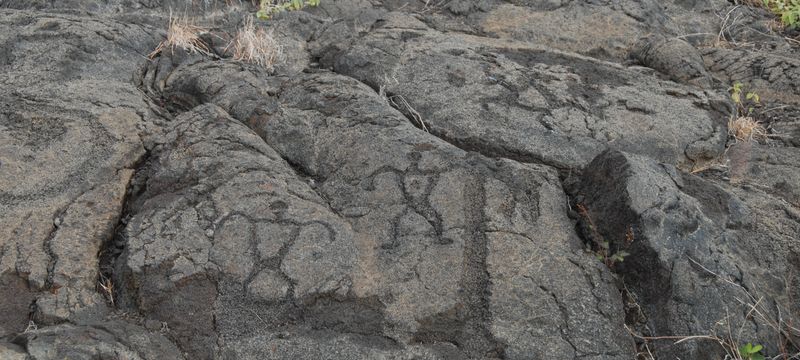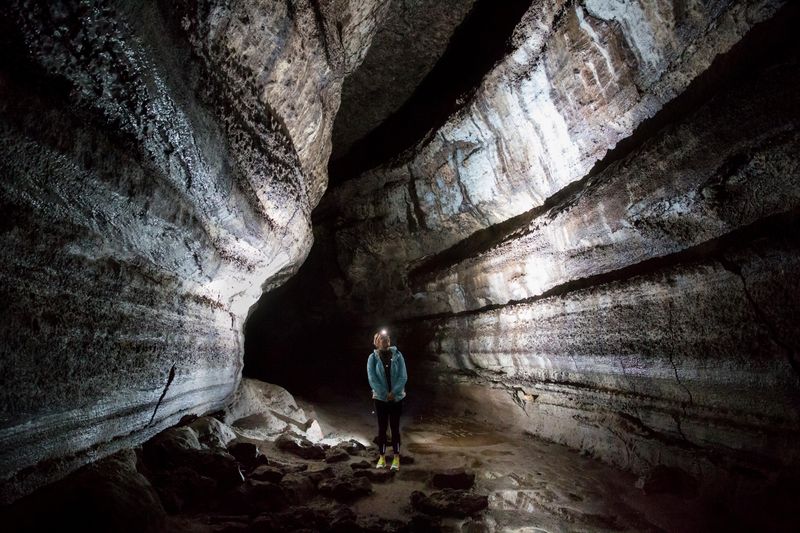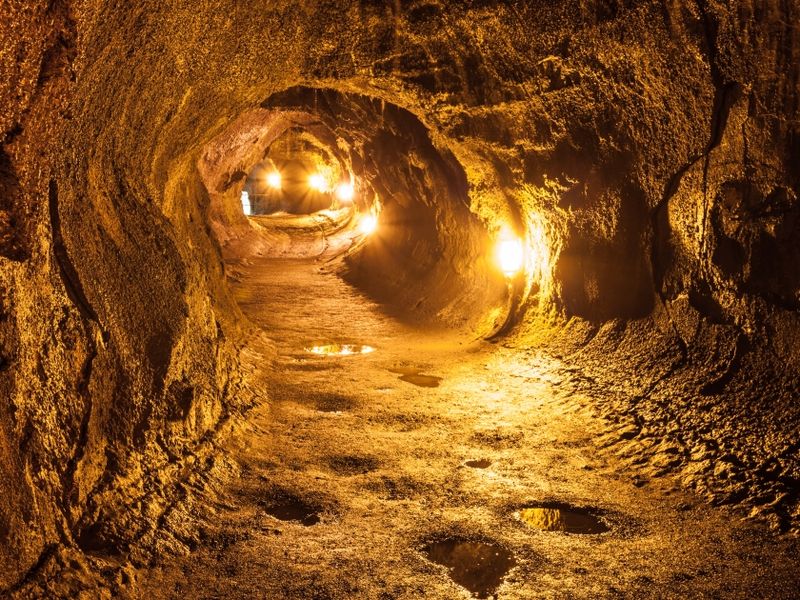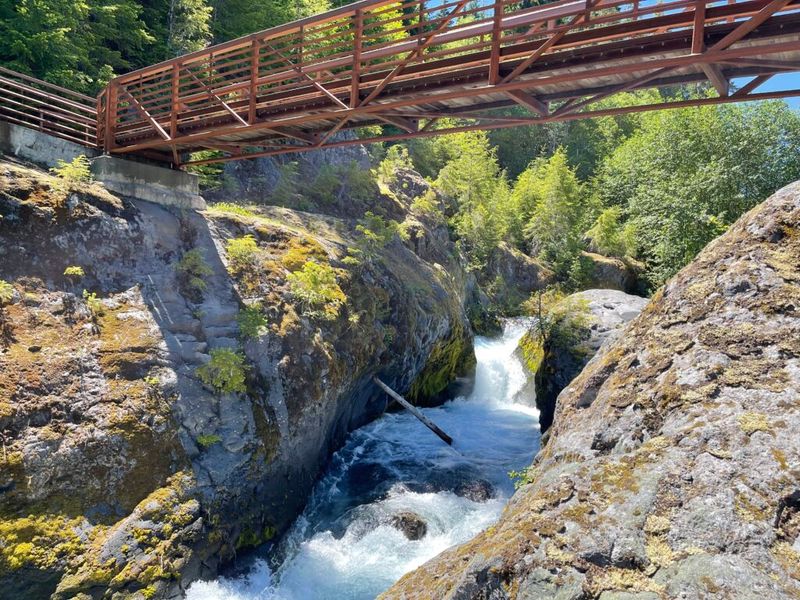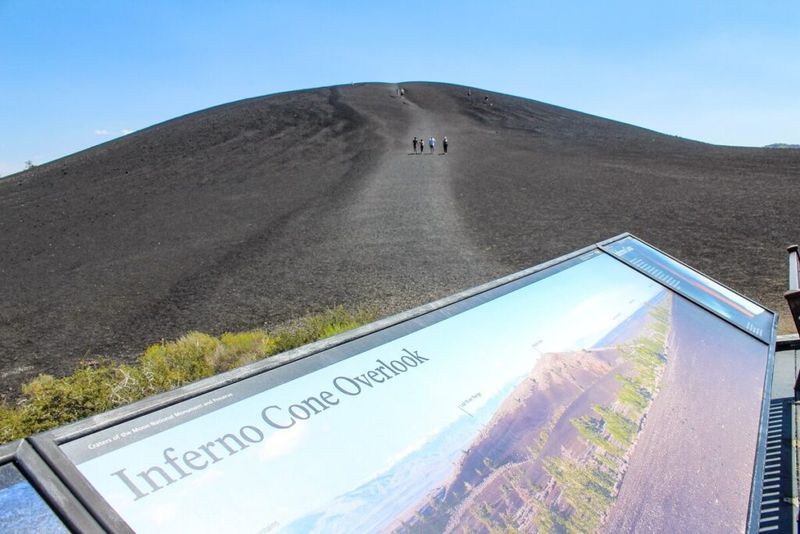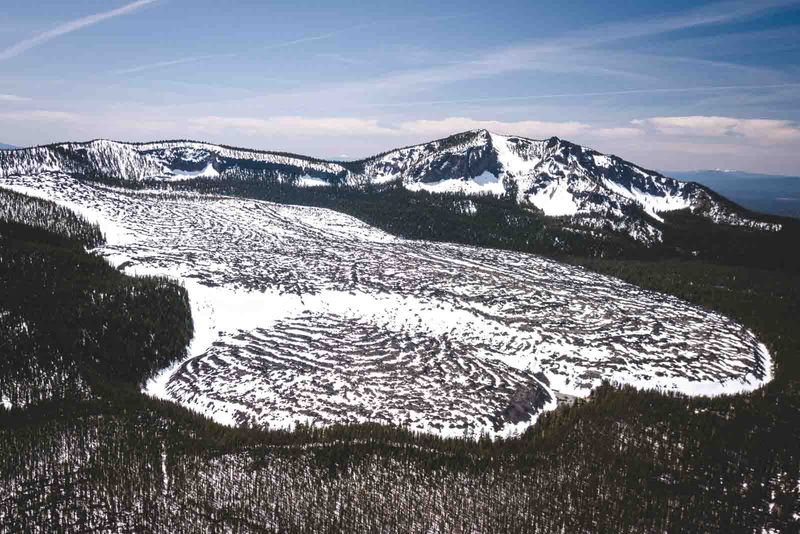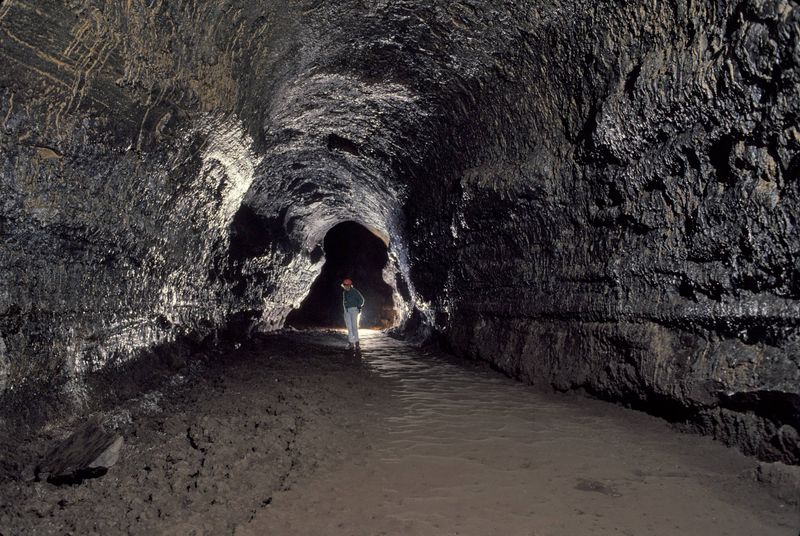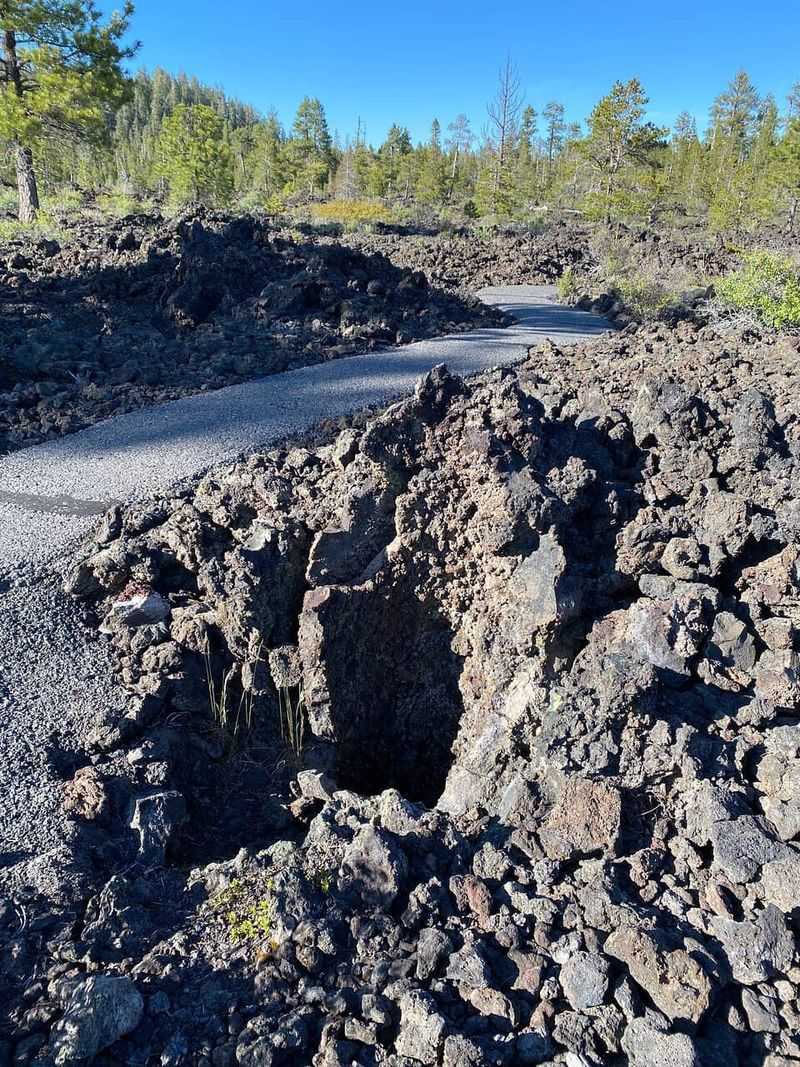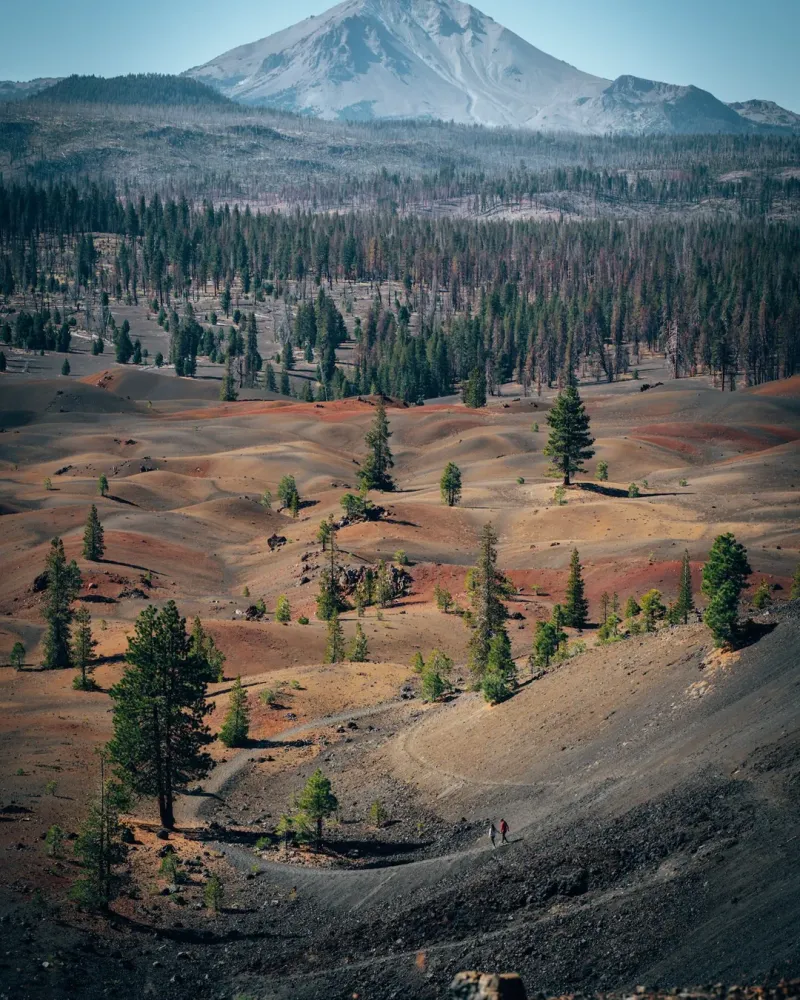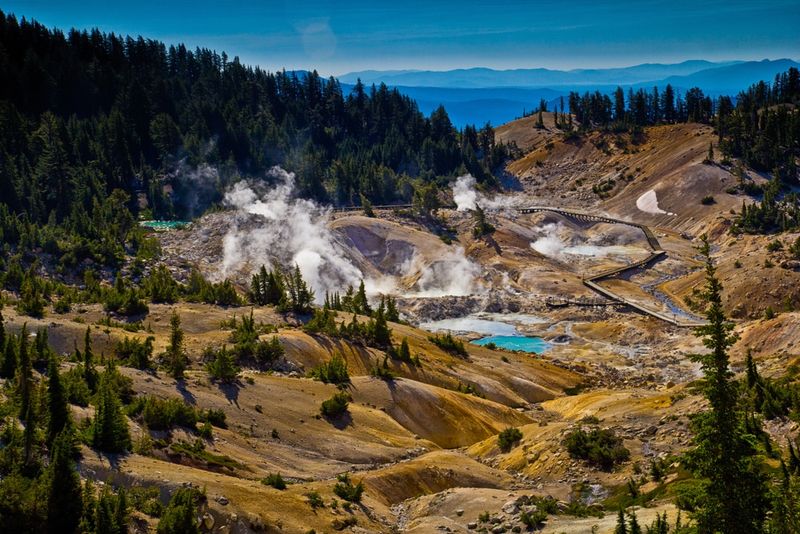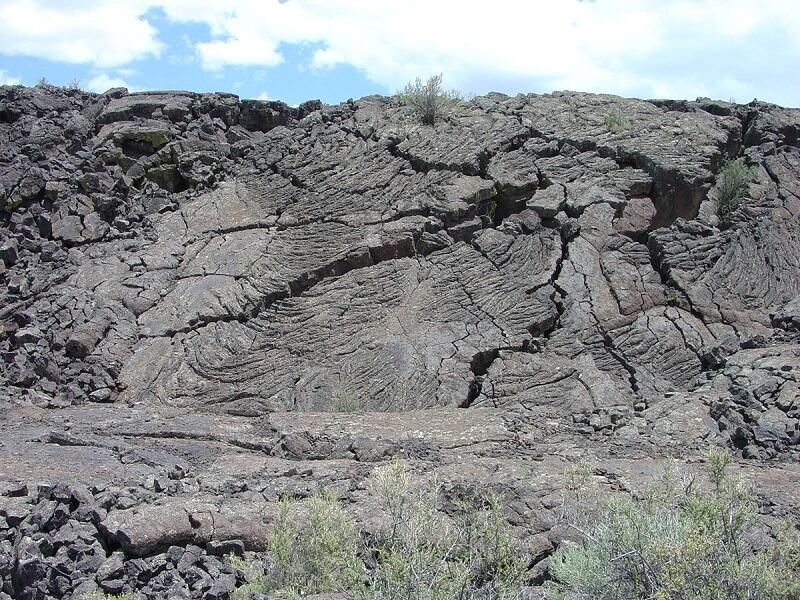America’s volcanic landscapes offer some of the most dramatic hiking experiences on the planet. From steaming craters in Hawaii to glittering obsidian flows in Oregon, these trails let you walk through ancient lava tubes, climb cinder cones, and witness the raw power that shaped our continent. Whether you’re seeking an easy family stroll or a challenging summit climb, these volcano hikes deliver unforgettable adventures across diverse ecosystems and geological wonders.
1. Kīlauea Iki Trail — Hawaiʻi Volcanoes National Park, Hawaiʻi
Standing at the rim, you’ll peer into a massive crater that once held a churning lava lake in 1959. The descent takes you through thick rainforest where native ferns drape overhead before you emerge onto the crater floor itself.
Walking across the hardened lava feels otherworldly—steam still rises from cracks, reminding you that heat lingers below. The contrast between verdant jungle and barren volcanic rock makes every step fascinating.
Plan three to four hours for the full loop, which connects with the Crater Rim Trail for extended exploration. Wear sturdy shoes because the rough lava surface can be tough on feet, and bring plenty of water since shade disappears on the crater floor.
2. Puʻu Loa Petroglyphs Trail — Hawaiʻi Volcanoes National Park, Hawaiʻi
More than twenty thousand petroglyphs wait at the end of this trail—one of the largest collections in Hawaii. Early Hawaiians carved these images into pahoehoe lava between 1450 and 1500 CE, creating a sacred site for family connections and spiritual ceremonies.
The round-trip distance covers about 1.4 miles across relatively flat terrain, though the exposed lava field offers zero shade. A boardwalk protects the most concentrated petroglyph area while letting visitors observe the intricate carvings safely.
Bring sun protection, water, and binoculars to appreciate details without stepping off designated paths. Morning or late afternoon visits offer cooler temperatures and better lighting for photography while respecting this culturally significant landscape.
3. Ape Cave Lava Tube — Mount St. Helens, Washington
Stretching roughly 2.5 miles underground, Ape Cave ranks among North America’s longest lava tubes. Created by flowing lava around two thousand years ago, this cave system offers two distinct routes—the lower cave provides easier walking, while the upper cave challenges adventurers with rock scrambles and eight-foot lava falls.
Timed-entry reservations become necessary during peak season, so plan ahead. Temperatures inside hover around forty-two degrees year-round, making jackets essential even on hot summer days.
Bring multiple light sources since the cave stays pitch black without them. The Forest Service recommends at least three light sources per person for safety, plus sturdy boots for navigating uneven basalt floors throughout your underground journey.
4. Nāʻhuku (Thurston Lava Tube) — Hawaiʻi Volcanoes National Park, Hawaiʻi
Nāʻhuku invites families and first-time volcano explorers to experience volcanic geology up close without breaking a sweat.
The maintained pathway and installed lighting make this accessible for almost everyone, though the environment stays cool and damp year-round. Native forest surrounds both entrances, creating a magical transition from sunlight to subterranean wonder.
This short stroll takes maybe fifteen minutes, but the experience sticks with you forever. Check daily conditions before visiting since occasional closures happen for safety inspections or wildlife protection, ensuring both your safety and the preservation of this natural treasure.
5. Lava Canyon Trail — Mount St. Helens, Washington
Water and lava created this spectacular canyon together. Muddy Fork carved through ancient basalt flows, exposing layered volcanic history in towering walls while creating potholes and cascades that seem sculpted by an artist.
Multiple trail sections accommodate different ability levels, from accessible viewpoints to more demanding routes requiring scrambling. The suspension bridge remains closed indefinitely, but plenty of open sections still showcase the canyon’s dramatic beauty.
Waterfalls thunder through the narrow corridor during spring runoff, adding sound and mist to the visual spectacle. Check current trail conditions before heading out since winter storms occasionally cause temporary closures, and always stay on designated paths to protect both fragile geology and your safety.
6. Inferno Cone — Craters of the Moon, Idaho
Short but punishing—that’s Inferno Cone in two words. This cinder cone climb covers only 0.4 miles round trip, yet the steep loose cinders make every upward step feel like two.
Your reward arrives at the summit: panoramic views sweep across the Great Rift and surrounding lava fields that look almost lunar. On clear days, you’ll spot distant mountain ranges rising above the volcanic plain.
The cinders shift underfoot like walking up a sand dune, so trekking poles help with stability. Early morning or evening visits avoid midday heat since shade doesn’t exist on the exposed slope, and the black cinders absorb sunshine intensely, making temperatures feel even hotter than the thermometer suggests.
7. Big Obsidian Flow Loop — Newberry National Volcanic Monument, Oregon
Glass crunches underfoot as you walk Oregon’s youngest lava flow. Roughly thirteen hundred years ago, molten rock spread across this landscape and cooled into glittering obsidian and airy pumice, creating a geology lesson you can touch.
The one-mile interpretive loop features signs explaining how volcanic glass forms and why this flow looks so different from darker basalt flows elsewhere. Sunlight catches the obsidian fragments, making the entire hillside sparkle.
Seasonal access typically runs summer through fall after snowmelt clears the roads. Sharp volcanic glass demands closed-toe shoes and careful footing, though the maintained trail stays relatively smooth. Collecting obsidian is prohibited, so enjoy the beauty with your eyes and camera instead of your pockets.
8. Lava River Cave — Newberry National Volcanic Monument, Oregon
Oregon’s longest lava tube stretches roughly one mile into the earth. Unlike guided cave tours, Lava River Cave lets you explore independently, though that freedom comes with responsibility for your own safety and preparedness.
Temperatures stay around forty degrees year-round, making warm layers necessary even during summer visits. The floor remains uneven with occasional low ceilings, so watch your head and footing throughout.
Seasonal operations and timed reservations control visitor numbers, protecting both the cave environment and visitor experience. Bring reliable flashlights or headlamps—phone lights won’t cut it for a mile-long underground journey. The cave closes during winter when ice makes conditions hazardous, typically reopening around May depending on weather patterns.
9. Lava Cast Forest Loop — Newberry National Volcanic Monument, Oregon
Seven thousand years ago, lava swept through a living forest. Trees didn’t simply burn—the lava cooled around their trunks before they combusted, leaving perfect vertical molds that preserve the forest’s ghostly memory.
This paved interpretive loop makes the phenomenon accessible for wheelchairs and strollers while protecting the fragile formations. You’ll see dozens of tree casts, some standing upright like chimneys, others collapsed into hollow tubes.
The forest that grows here now differs completely from the ancient one memorialized in stone. Interpretive signs help you understand the volcanic processes that created these unusual features, making geology tangible and fascinating. Photography enthusiasts love the contrast between living pines and their prehistoric stone ancestors frozen in time.
10. Cinder Cone & Fantastic Lava Beds — Lassen Volcanic National Park, California
Climbing Cinder Cone tests your leg muscles—the sandy volcanic trail slides backward with each step upward. But reaching the rim reveals why this ranks among Lassen’s signature hikes: the Painted Dunes spread below in sunset colors while vast lava beds stretch toward distant peaks.
The symmetrical cone erupted relatively recently in geological terms, around 1650 CE. Oxidized volcanic ash created the Painted Dunes’ remarkable reds, oranges, and purples that look almost unnatural.
Bring extra water since the exposed climb offers no shade and the dark cinders radiate heat. Trekking poles help with the loose surface, and gaiters prevent volcanic sand from filling your boots during the descent back down the shifting slope.
11. Bumpass Hell — Lassen Volcanic National Park, California
Named after a guide who broke through the crust and badly burned his leg, Bumpass Hell reminds visitors that Lassen remains volcanically active. This three-mile round-trip hike leads to the park’s largest hydrothermal area where Earth’s interior heat creates a landscape of bubbling mudpots, hissing fumaroles, and steaming pools.
Boardwalks keep you safely above the scalding ground while providing excellent views of the colorful thermal features. The sulfur smell hits you before you see the basin—it’s strong but tolerable.
Access typically opens late summer or fall after heavy snowpack melts. Stay on boardwalks since the thin crust over boiling water can collapse without warning, as Mr. Bumpass painfully discovered in the 1860s.
12. Lava Falls Trail — El Malpais National Monument, New Mexico
New Mexico’s youngest lava flow—only three thousand years old—creates a challenging one-mile loop marked by cairns. Without the rock piles guiding your route, you’d quickly lose your way among the jumbled pressure ridges, squeeze-ups, and lava toes.
This isn’t a casual stroll. The terrain demands constant attention, sturdy boots, and a willingness to scramble over rough volcanic rock. But geology enthusiasts find paradise here, seeing textbook lava features preserved in pristine condition.
El Calderon area remains closed through late May 2026 for improvements, but Lava Falls stays open. Bring gloves for steadying yourself on sharp rock, plenty of water since desert heat intensifies, and download offline maps since cell service disappears in the monument.
